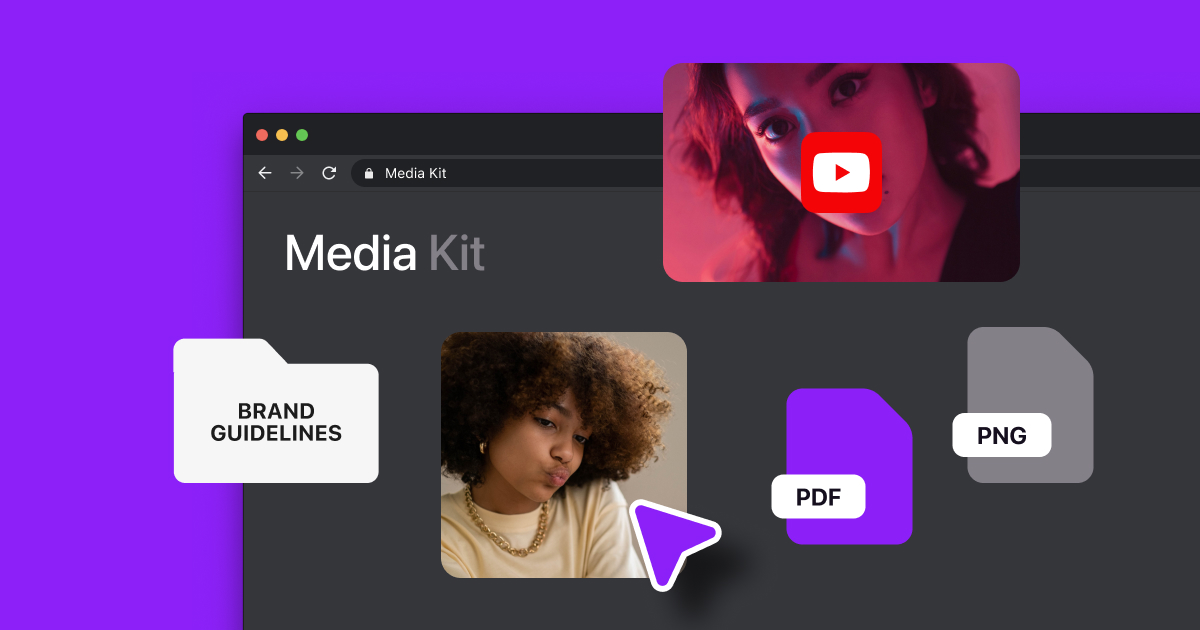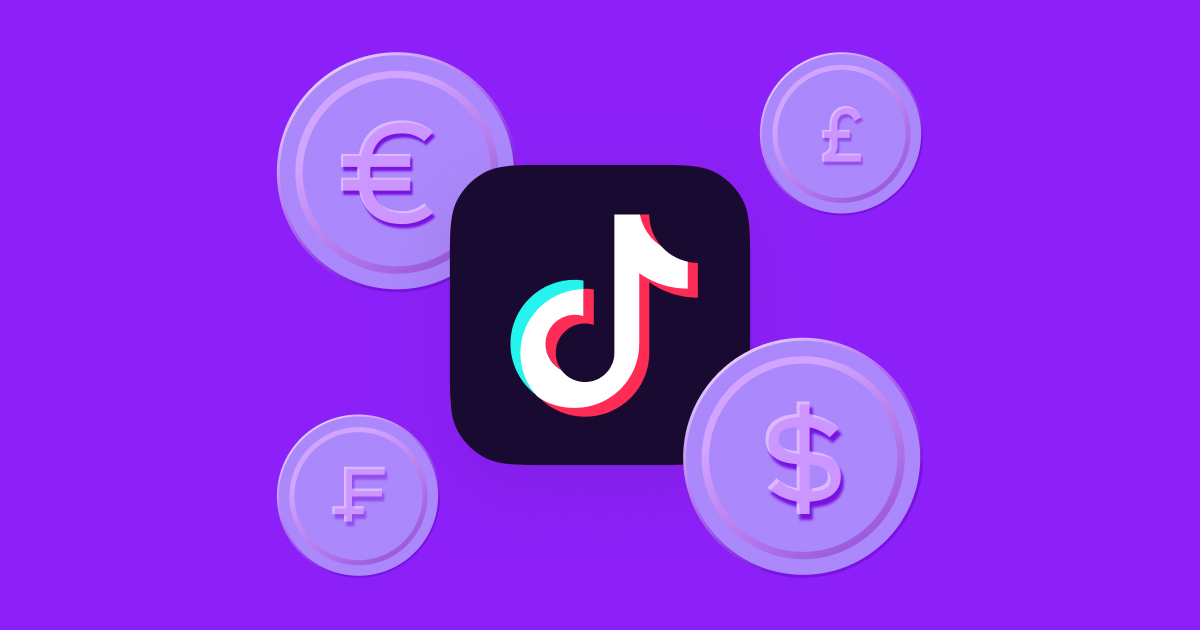TikTok versus YouTube — which is best for creators?
If you’re ready to start posting video content and building an audience, both platforms have different strengths. YouTube supports more long-form videos, but TikTok might give you better chances of going viral with its high-tech algorithm. To reach as many people as possible, you might even start posting on both.
This deep dive into both platforms should tell you everything you need to decide which one is a better fit for you.
What Is TikTok?
TikTok is used for sharing short-form video content. You can create and upload videos, called "TikToks," of up to three minutes. If you upload from your camera roll instead of filming in the app, your videos can be up to 10 minutes.
Content appears in portrait mode on users’ For You Pages (FYPs), which shows them videos from people they follow and what TikTok’s algorithm thinks they’ll enjoy. There’s also a “Following” tab for you to only see content from creators you already liked enough to follow.

As long as you stay within TikTok's rules and guidelines, you can share any kind of video, like dance challenges, comedy skits, and lip-syncing. However, the app is known for its “audios” — popular background music and sounds — that create trends and help creators (and musicians) go viral fast. TikTok has around 1.7 billion users, so a viral video could quickly reach a massive global audience and garner millions of views.
What Is YouTube?
YouTube is a video-sharing platform where you can watch, upload, and share both short-form and long-form videos. From music and tutorials to vlogs and beyond, YouTube has long been the go-to website for creators to post videos, find a niche, and even start a career as an influencer. The platform has powerful search and recommendation algorithms that suggest relevant videos.

One of YouTube's defining features is its versatility. You can still post regular landscape videos that are up to 12 hours long — something that can’t be done on TikTok. The platform also accommodates short-form and portrait-mode scrollable videos with the introduction of YouTube Shorts. Those can be up to 60 seconds long.
YouTube Versus TikTok: How Are They Similar?
TikTok and YouTube share quite a few features. First and foremost, their algorithms help viewers find videos and creators that interest them. YouTube offers Suggested Videos, while TikTok has an FYP — both based on algorithms that recognize patterns in user preferences and recommend related content. This engages users to keep them scrolling and watching, but it also helps creators understand what interests their audiences and what to create.
Both platforms also have many social features such as likes, comments, and shares that allow users to engage with creators. Your followers or subscribers can request new videos, share their thoughts on what you’ve posted, or simply say how much they liked content in the comment section. You can then respond or interact with the comments to show them you read and value their input, building a stronger community.
As a content creator, it's useful to see how much your viewers like your videos. You can do this by checking which videos get the most new followers and which ones get the fewest likes. Both apps have insights and dashboards where creators view metrics and analytics, like watch time and like counts, to see how videos perform.
The Differences Between TikTok and YouTube
With the similarities out of the way, it’s time to focus on the main differences between TikTok and YouTube. Here are the basics:
Here’s a deeper dive into these differences:
Video Format and Length
When recording within the TikTok app, your videos can range from 15 seconds to three minutes long. However, you can upload a 10-minute long pre-recorded video to the app. TikToks also have to be in a vertical, portrait format to fit viewers’ phone screens. You could upload a landscape video, but it’ll either appear sideways or very small.
YouTube is known for its long-form content, with videos ranging from a couple of minutes to a few hours. It’s ideal for diving into more detailed and expansive storytelling. Horizontal landscape videos are best, but with YouTube Shorts, you can upload vertical videos, just like TikTok.
Audiences
The teen and young adult population makes up a sizable portion of TikTok's user base, though people of all ages use it. The platform emphasizes trends and challenges, appealing to younger users who want to have fun.
YouTube boasts a more diverse audience, spanning dozens of age groups and hundreds of interests. It has an extensive range, from educational videos to entertainment, making it a more functional space for creators targeting varied demographics.
Ads
TikTok seamlessly integrates in-feed ads that appear between videos instead of interrupting them. This system aligns with the platform's immersive and interactive nature so it doesn’t disrupt the user experience during videos, only between them.
YouTube does the same for the Shorts feed, but not their long-term content. Instead, ads show up either before or during the video, meaning they interrupt it. Sometimes viewers can skip them after a few seconds, but in many cases, they have to watch the ad through. With more watch time and longer videos, YouTube ads give creators more opportunities to make money, though it can be annoying for viewers when videos are constantly interrupted.
Editing
TikTok has built-in editing features like effects, filters, and stickers so creators can film and post videos fast. This is great for content that doesn’t need a lot of editing, but it isn’t enough if you want to be more precise or heavily edit a video. Third-party apps like Captions make it easier and faster to add personalized captions, follow templates, and integrate unique effects.
YouTube has a Creator Studio that allows for quick editing, but most creators use external editing software, especially for longer content. To make great YouTube videos, you might need to spend more time editing than you would with TikTok — especially if your content is more than a few minutes long.
Music
Both TikTok and YouTube let you add royalty-free background music to your videos. However, if you want to use trending songs from popular artists, you're better off using TikTok. YouTube might hide or demonetize your video if it receives copyright claims, which are removal requests or warnings you'll see when using a song without the original artist's permission. A copyright claim could cause YouTube to give ad money to the artist instead of you and, in extreme cases, suspend your account.
Livestreaming
Streaming content live is a great way to interact with your audience and build connections. TikTok allows users with 1,000 or more followers to go live. YouTubers, on the other hand, need at least 50 subscribers.
Is TikTok Better Than YouTube for Making Money?
You might have noticed we didn’t include monetization in the list above. That’s because it’s a complicated process for any platform. Both allow you to generate income from your content, although the exact requirements and processes differ.
On YouTube, you'll need to sign up for the YouTube Partner Program (YPP). You must have at least 1,000 subscribers and 4,000 public watch hours — the total number of hours people have watched your videos — in the last 12 months to be eligible. The videos don't have to be uploaded within the last 12 months, but the view count from that period must be at least 4,000 hours. Once you’re accepted into the Partner Program, you can earn money through channel membership, the ads on your video, and YouTube Premium revenue sharing.
TikTok launched its Creator Fund in 2020, which lets you earn ad money directly from the platform depending on video reach and performance. However, the program had a three-year period with a limited $1 billion budget to pay creators. As of December 16, 2023, the Creator Fund is no longer valid for TikTokers in the US, UK, Germany, and France.
TikTok’s Creativity Program is replacing the Creator Fund. It's invitation-only, and you'll need to create videos longer than a minute to qualify. The other eligibility requirements are the same as the Creator Fund's, though you have to be based in the US.
Another way to make money on TikTok and YouTube is with brand deals. If you have enough active followers, brands might pay you to promote their products. It’s a great option for both platforms, though the longer your videos are, the more opportunities you’ll have to use that space for sponsors. You’ll probably get paid more for a two-minute segment in a 10-minute YouTube video than for a 10-second TikTok, even if you dedicated the whole TikTok to the ad — but it depends on your content, follower count, and the brand.
TikTok or YouTube: Which One Should You Use?
The answer to this question is totally subjective. It depends on what content you want to make and who you want to watch it.
If you want to reach a younger demographic and are more comfortable following trends and creating bite-sized content, TikTok is the platform for you. However, YouTube is the way to go if you're looking for a more diverse audience or want the opportunity to make in-depth videos.
Nothing’s stopping you from posting on both. You can repost TikTok content on YouTube Shorts and vice versa, giving you more opportunities to reach new viewers. You can also cut longer YouTube videos to create short-form content for TikTok and YouTube shorts. Captions’ AI Shorts tool does this work for you, extracting your most important clips to create high-quality short-form content in just a few clicks to save you hours spent editing them down.
Upgrade Your Content on Any Platform
Posting videos on multiple platforms can be a lot to handle, but editing the content doesn’t have to be. Use the Captions app — a powerful, AI-driven tool that’s feature-packed with everything from AI Shorts to easy video trimming. Regardless of where you plan to post your content, Captions will take your videos to the next level 10x faster. Try it today.









